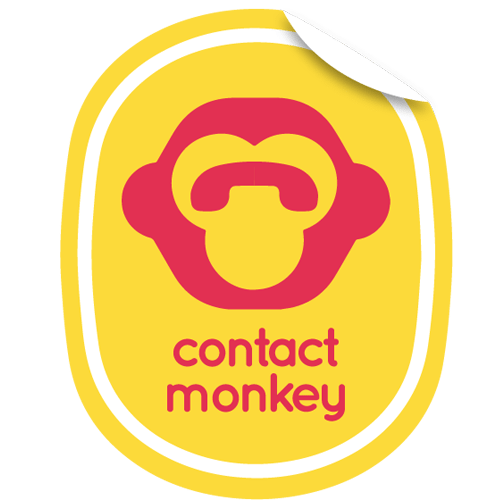Seasonal hiring is an essential part of the hospitality industry. In 2024, the restaurant industry alone is expected to create over half a million seasonal jobs.
However, this type of hiring can be a challenge for your HR team and hiring managers. Seasonal hiring means a huge amount of administrative work, from hiring to training to compliance management. If your HR team isn’t prepared, they could become overwhelmed.
In this article, we’ll look at some ways to streamline your seasonal hiring process. But first, let’s look at temporary staffing from a HR perspective.
5 HR challenges in seasonal hiring
HR teams manage the entire employee lifecycle, from the pre-application stage right up to the final exit interview.
In companies that rely on seasonal hires, this means managing a lot of employees with very short lifecycles. In turn, this means increased HR overheads, such as:
1. Developing a recruitment process
You may need to build an entire team from scratch with a hard deadline. For example, a holiday resort might need to hire and train 500 people before the first guests arrive.
For your HR team and hiring managers, this means:
- Creating an advertising strategy that promotes an attractive employer brand
- Managing a huge volume of candidate communications, including screening resumes, scheduling interviews, and making employment offers
- Developing a streamlined hiring process that allows fast, accurate decisions
Getting this process right requires a huge amount of planning and communication. Also, the hiring team needs to gather candidate feedback so they can fine-tune the process before next season.
2. Sourcing talent
Hiring at scale can sometimes require a blitz approach to advertising, getting your job ads out to the widest possible audience.
However, the HR team and recruiters will need to consider some additional factors, such as:
- Reaching different audiences to help ensure hiring diversity
- Creating a clear employer offer that gives candidates the right expectations
- Building a talent pipeline that speeds up hiring during future seasonal windows
Again, this requires a great deal of strategy and communication. The right approach to talent sourcing can help you find the best people for your team—and avoid wasting money on job advertising.
3. Managing compliance
Hiring always involves a compliance overhead. For example, your HR team will have to deal with I-9s, workplace safety training, background checks, EEO issues, minimum wage rules, and statutory benefits.
Some of the other compliance overhead involves:
- Navigating complex and varying federal, state, and local employment laws
- Ensuring proper classification of seasonal workers (e.g., exempt vs. non-exempt)
- Managing overtime, minimum wage, and other compensation requirements
Every new hire creates additional compliance work for the HR team, which can overwhelm a small HR department during large-scale hiring projects.
4. Providing onboarding and introductory training
Training and onboarding is a vital part of the hiring process. Seasonal workers often have less time to get up to speed before they begin interacting with guests, so it’s essential to get this part right.
Some of the HR responsibilities here include:
- Providing comprehensive onboarding and training to a large group of new hires
- Ensuring consistency and quality of training across multiple locations or departments
- Integrating seasonal workers into the company culture and values
An effective onboarding process can make all the difference to your team’s success. With the right training, people can get up and running in no time.
5. Working to improve retention
Onboarding can also help with another big problem in seasonal hiring: staff turnover. Some attrition is inevitable when dealing with seasonal workers, but you can reduce turnover and increase loyalty by providing outstanding introductory training.
Some other things HR can do to improve retention are:
- Monitoring morale and engagement throughout the season
- Working fast to resolve any issues that may affect employee experience
- Building loyalty programs to retain the best performers
An effective retention strategy can help you retain staff from season to season, which will reduce hiring pressures over time.
Those are just some of the ways in which seasonal hiring can be a challenge for HR teams. But a great HR team can also do things to improve the seasonal hiring process.
How to streamline your seasonal hiring process
An experienced HR is a must-have for any hospitality company. HR experts understand how to navigate all of the challenges above and build a great team every season.
Here are five of the most important techniques for effective seasonal hiring.
1. Start early and plan ahead
Planning and communication are key to hiring success. Start making your hiring plans well in advance of the next season, and make sure all stakeholders have a voice in demand forecasting.
It’s crucial to look at past data when making plans. Keep track of recruitment metrics like cost-per-hire, time-to-hire, staff turnover rate, and exit interview feedback. This will help you predict the amount of time and investment require to build your team. Also, the data will help pinpoint areas where the hiring process can be improved.
2. Streamline the application process
An Applicant Tracking System (ATS) can help take a lot of the work out of the hiring process. An ATS can process thousands of applications and scan them for certain keywords. This allows your hiring team to identify the most promising applications with just a few clicks.
It’s also important to review each step hiring process, including interviews and practical assessments. Look for ways to make these steps more efficient with group interviews, video interviews, or interactive digital assessments.
3. Provide comprehensive onboarding and training
Onboarding needs to include job training and an explanation of company policy. You can use a mix of strategies to deliver onboarding and training. As well as in-person sessions, you can use video training and online materials. It’s also helpful to assign buddies or mentors who can help answer questions on the fly.
Onboarding is also a chance to introduce new hires to your organizational culture. Take that opportunity to talk about your mission and values, and invite current team members to talk about their experiences. Cultural integration is a key part of engagement and retention, so it’s worth investing some time in this.
4. Foster a positive and inclusive work culture
HR can also intervene to help promote a positive workplace culture. One way to do this is to facilitate open communication between leaders and colleagues. Positive feedback can lead to growth, which builds trust within the team.
Celebrating wins is another way to support a positive culture. HR can lead the conversation about team successes and give credit where it’s due. It’s also useful to offer rewards and recognition for people who exceed expectations—HR can help to track and administer such programs.
5. Build a talent pipeline for future seasons
A talent pipeline is a list of potential candidates that you can contact when positions are available. This might include past employees that you’d like to invite back and previous applicants who weren’t quite right the last time around. Your ATS can help you keep track of such candidates.
The talent pipeline is another reason to focus on improving your candidate and employee experiences. If people have a positive impression of your company, they’re more likely to come back for next season. Returning hires will reduce your time-to-fill, take pressure off the onboarding team, and help you build a consistent organizational culture over time.
Need help scaling up for seasonal hiring?
Whether you’re hiring permanent employees or just need people for the summer, it’s easier when you’ve got HR expertise at your fingertips.
If your current HR team is struggling to scale up, you could look at working with a HR outsourcing partner. Your HR partner can provide the skills you need for a successful hiring initiative, and you can engage with them on a flexible basis.
Want to learn more? Book a call with one of our HR consultants today and let’s talk about your seasonal hiring plans!











